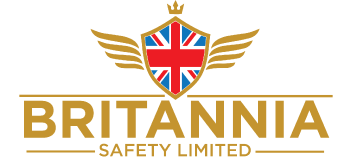
Delta Plus
Delta Plus PVC/cotton chemical 30cm rough grip gauntlet #VE780
Coating: PVC.
Thickness: 1,30 mm.
 REGULATION (EU) 2016/425
REGULATION (EU) 2016/425
EN420:2003+A1:2009 General requirements
| 5 | Dexterity (from 1 to 5) |
• Conform to harmlessness (pH, chrome VI levels, etc…).
• Conform to the size charts (see chart on below).
• Pass the dexterity test.
• Conform to the labelling, information and identification instructions.

STANDARDIZED LABELING/IDENTIFICATION
Each protective glove is clearly identified by a standardized label containing the following elements:
- Our brand logo.
- The product reference or the trade name.
- The size.
- An information tag indicating that instructions on the product are available.
- The standardization pictogram(s) with their performance ratings.

EN388:2016 Protective gloves against mechanical Risks (Levels obtained on the palm)
| 4 | Resistance to abrasion (from 1 to 4) | |
| 1 | Resistance to cutting (from 1 to 5) | |
| 3 | Resistance to tear (from 1 to 4) | |
| 1 | Resistance to puncture (1 to 4) | |
| X | Resistance to cutting by sharp objects (TDM EN ISO 13997) (from A to F) |

Impact resistance on the metacarpal area: if this performance is claimed, the "P" mark appears.


Cut by blade, 2 test methods:
EN388 6.2.: For low to middle risks of cutting. A circular blade on which a constant force of 5 N is applied, moves back and forth until the sample is cut. It measures the number of completed cycles and is credited with the corresponding level.
EN ISO 13997: For materials that blunt the blade during the EN388 6.2 test and/ or are particularly resistant, for high risk of cutting. A straight blade makes a single movement of 20 mm with a force of 2N, the test is repeated with a different force as many times as necessary until the sample is cut. A level corresponding to the force required to cut the sample is assigned. This method better represents the usage
situations that present a high risk of cutting.


EN ISO 374-1:2016 Protective gloves against dangerous chemicals and micro- organisms - Part 1: Terminology and performance requirements for chemical risks.
| TYPE | B | Type B - Water and air tightness according to EN374-2:2014. Permeation resistance to at least 3 chemicals at level 2 according to EN16523-1: 2015 (from 1 to 6). |
| . | Determination of resistance to degradation by chemicals according to EN374-4: 2013. Part 4: Determination of resistance to degradation by chemicals. | |
| J | 2 > 30 mn | n-Heptane (J) CAS 142-85-5 |
| K | 6 > 480 mn | Caustic soda 40% (K) CAS 1310-73-2 |
| L | 4 > 120 mn | Sulphuric acid 96 % (L ) CAS 7664-93-9 |
• Penetration (tested as per standard EN374-2) :
Diffusion of water or air, to check the impermeability, on a non-molecular level, of a chemical product and/or micro-organism through the porosities, seams, micro-holes or other imperfections present in the material of the protective glove.
• Degradation (tested as per standard EN374-4) :
Determination of the physical resistance of materials to degradation after continuous contact with hazardous chemicals.
• Permeation (tested as per standard EN374-3 or EN16523) :
Process by which a chemical product diffuses through the material of a protective glove, by continuous contact, on a molecular level.
The EN ISO version of stadard EN374-1 introduces the concept of three types of protection agains the permeation of chemicals :
-Type A : The glove gives a performance index to permeation at least qual to 2 for 6 chemical test substances taken from the list of chemicals specified in the standard.
-Type B : The glove gives a performance index to permeation at least equal to 2 for 3 chemical test substances taken from the list of chemicals specified in the standard.
-Type C : The glove gives a performance index to permeation at least equal to 1 for 1 chemical test substances taken frome the list of chemicals specified in the standard.



EN ISO 374-5:2016 Protective gloves against dangerous chemicals and micro-organisms - Part 5: Terminology and performance requirements against micro- organisms risks.
| BACTERIA + FUNGI | . | BACTERIA + FUNGI : Water and air tightness according to EN374-2:2014. |
Penetration of molds and bacteria (tested according to EN374-2): Test by which the water and airtightness of a glove is checked.
Penetration of viruses (tested according to method B of ISO 16604) : Process that determines the resistance to penetration by blood-borne pathogens - Test method using the Phi-X174 bacteriophage :

Examples of application :
The field of use is decisive because, depending on the case, the glove may have to combine several properties in order to meet the necessary protection requirements. It is therefore very important to refer to the recommended areas of use and the results of the laboratory tests found in the instructions for use. However, it is recommended to check that the gloves are suitable for the intented purpose by carrying out tests beforehand, because the conditions at the workplace may differ from those of the standard test, depending on the temperature, abraion and degradation.
Top Brands
View all available brands here
FAQs
From our customers...
Where do you Deliver?
Currently we only deliver to the UK
Is Shipping Free?
Yes if you spend £50 or more per order.
Do you offer Bulk Discounts?
Yes - please contact us here or call 01702 746363.
Can I pick up an order?
Call us to arrange a pick-up on 01702 746363.














